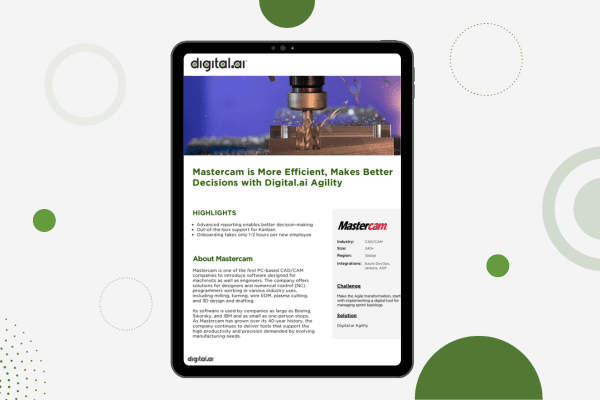Agile Software Development Benefits
Agile development accelerates the delivery of initial business value, and through a process of continuous planning and feedback, is able to ensure that value is continuing to be maximized.
Agile development, in its simplest form, offers a lightweight framework for helping teams, given a constantly evolving functional and technical landscape, maintain a focus on the rapid delivery of business value (i.e., bang for the buck). As a result of this focus, the benefits of agile software development are that organizations are capable of significantly reducing the overall risk associated with software development.
In particular, agile development accelerates the delivery of initial business value, and through a process of continuous planning and feedback, is able to ensure that value is continuing to be maximized throughout the development process. As a result of this iterative planning and feedback loop, teams are able to continuously align the delivered software with desired business needs, easily adapting to changing requirements throughout the process. By measuring and evaluating status based on the undeniable truth of working, testing software, much more accurate visibility into the actual progress of projects is available. Finally, as a result of following an agile process, at the conclusion of a project is a software system that much better addresses the business and customer needs.
The diagram below displays the differences between agile and waterfall development processes. By delivering working, tested, deployable software on an incremental basis, agile development delivers increased value, visibility, and adaptability much earlier in the life cycle, significantly reducing project risk.
Problems with traditional software development
According to the Standish Group’s famous CHAOS Report of 2000, 25% of all projects still fail outright through eventual cancellation, with no useful software deployed. Sadly, this represents a big improvement over CHAOS reports from past years. And now there is more evidence of the same kind. In Agile and Iterative Development: a Managers Guide, renowned consultant and author Craig Larman does a thorough job of debunking the traditional waterfall model once and for all.
The numbers are overwhelming. A study in the United Kingdom shows that of 1,027 projects, only 13% did not fail, and waterfall-style scope management was the “single largest contributing factor for failure, being cited in 82% of the projects as the number one problem.” A 1995 study of over $37 billion USD worth of US Defense Department projects concluded that “46% of the systems so egregiously did not meet the real needs (although they met the specifications) that they were never successfully used, and another 20% required extensive rework” to be usable.
Larman also points that in “another study of 6,700 projects, it was found that four out of the five key factors contributing to project failure were associated with and aggravated by the waterfall model, including inability to deal with changing requirements, and problems with late integration.” Another study of over 400 waterfall projects reported that only 10% of the developed code was actually deployed, and of that, only 20% was actually used.
These numbers reinforce what many of us have experienced personally: the waterfall approach is a risky and expensive way to build software systems. This is the real reason why the much of industry is investigating and/or implementing agile alternatives.
Looking for a tool to support your agile software development efforts?
See how Digital.ai Agility, formerly VersionOne, helps you easily plan and track your agile software projects, releases, and iterations with drag-and-drop simplicity using a familiar spreadsheet and whiteboard-style user interface. Learn more here.




